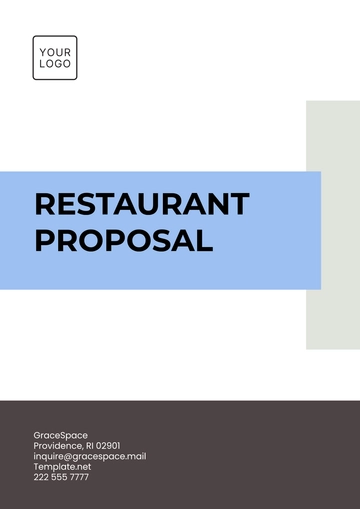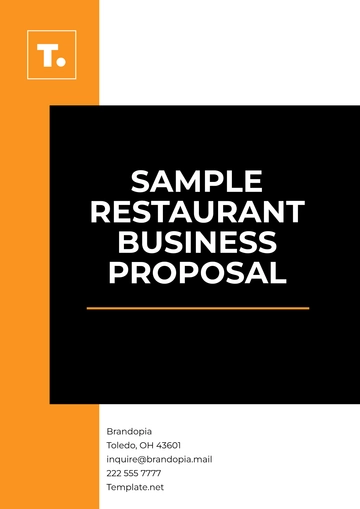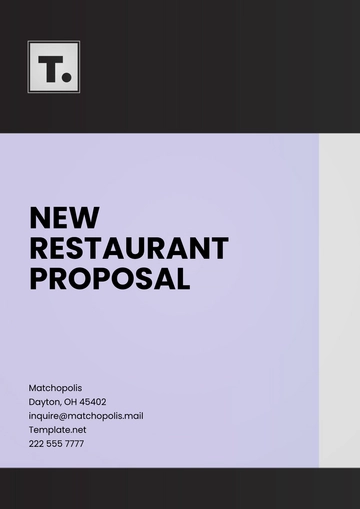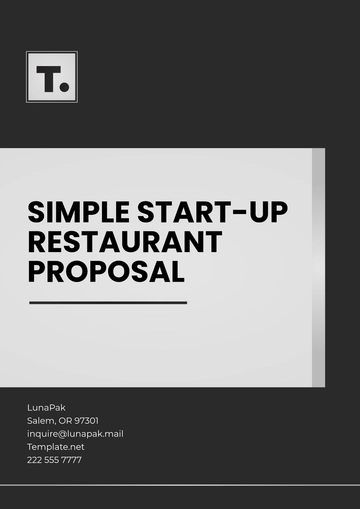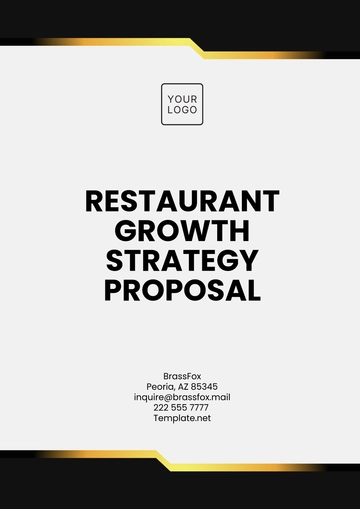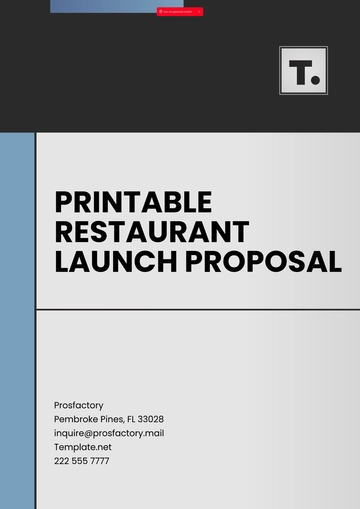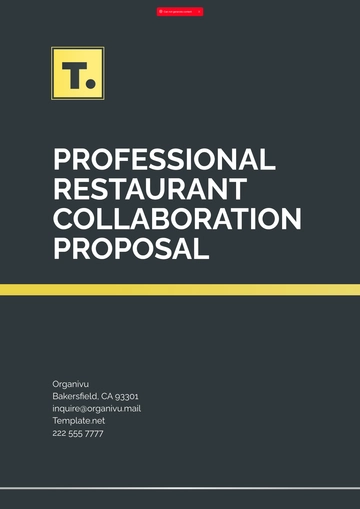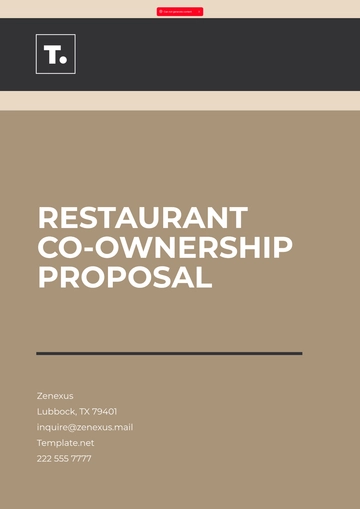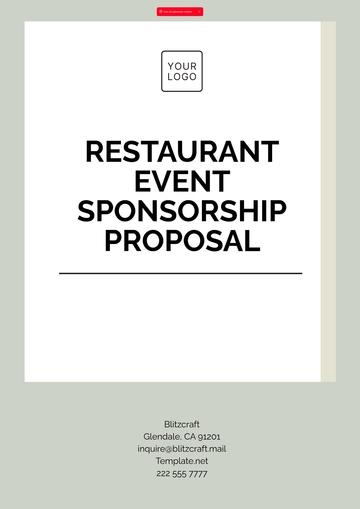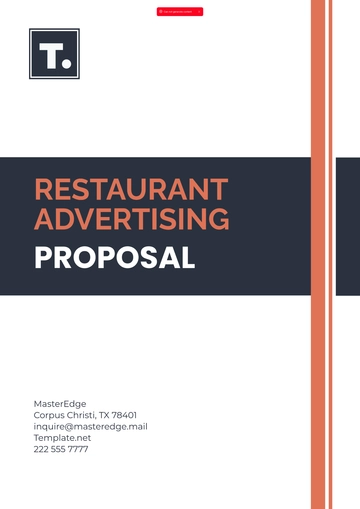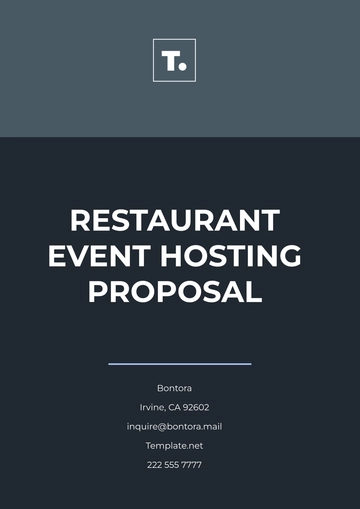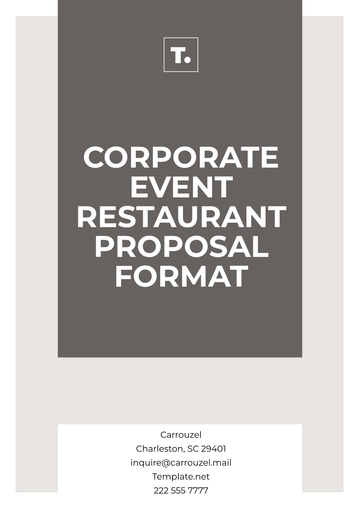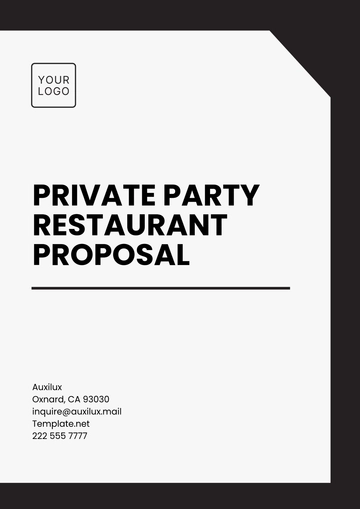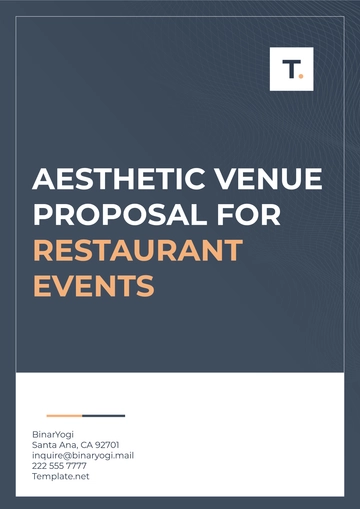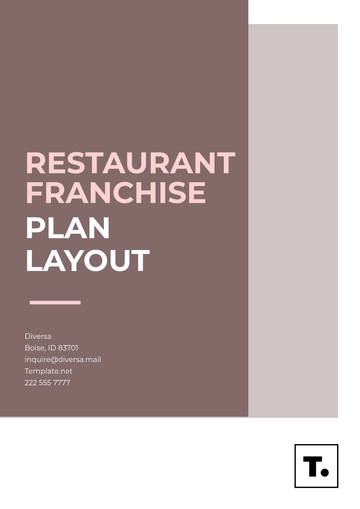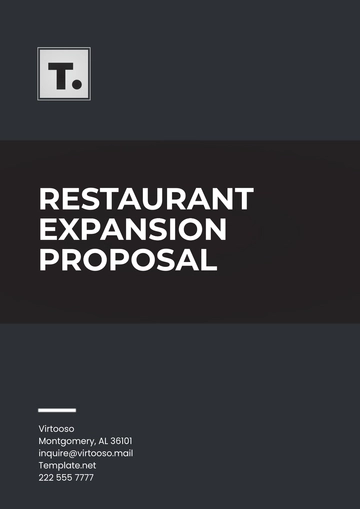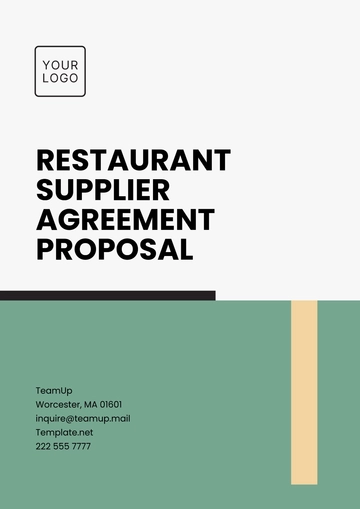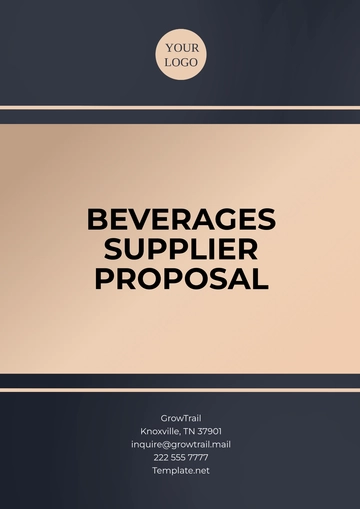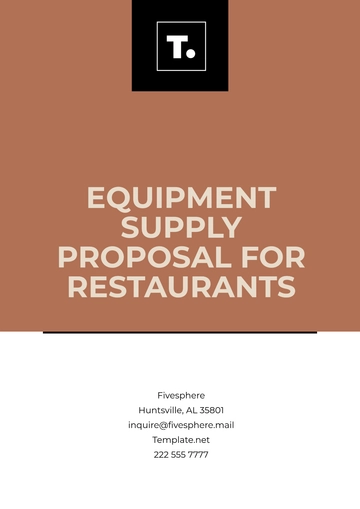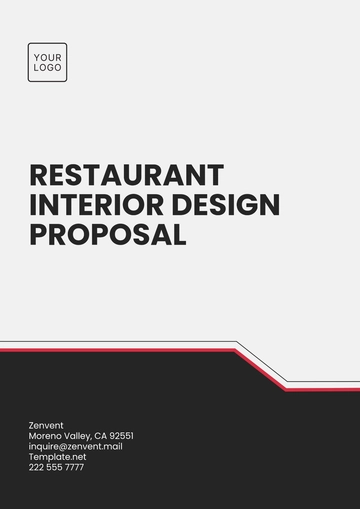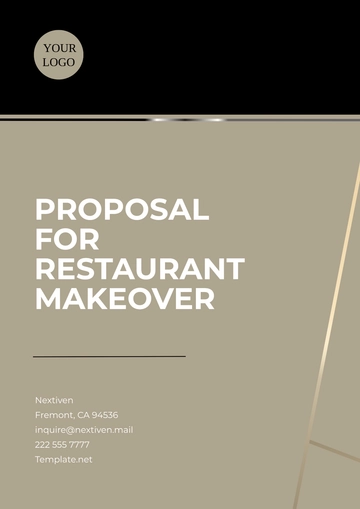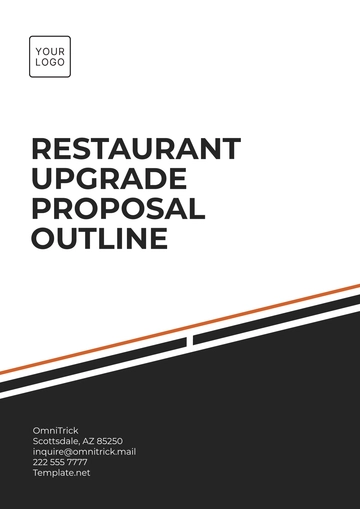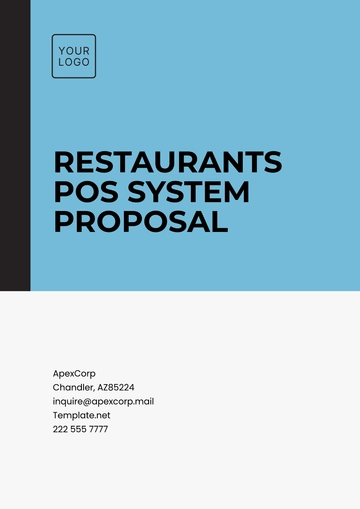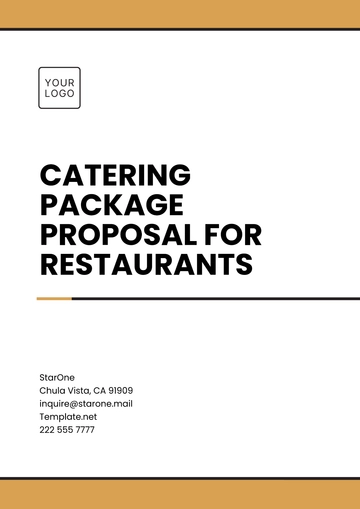Free Restaurant Loan Proposal
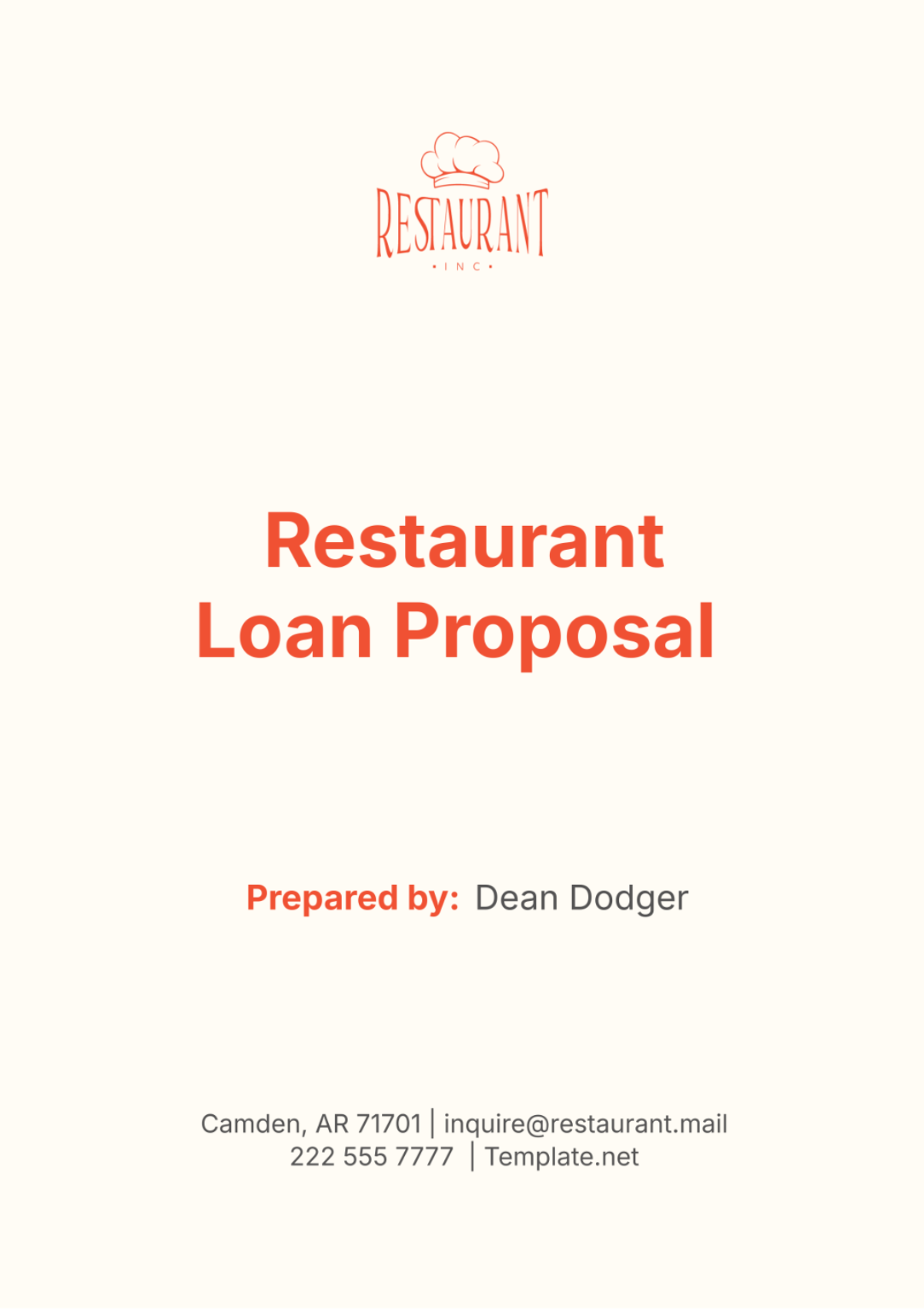
I. Executive Summary
A. Introduction to [Your Company Name]
[Your Company Name] is a thriving restaurant located in the heart of [City], known for its exceptional dining experience, innovative menu, and high-quality service. Since its establishment in [Year], the restaurant has become a favorite among locals and tourists alike. Our mission is to provide a memorable dining experience that combines delicious food, a welcoming atmosphere, and outstanding customer service. Our vision is to be recognized as a leading restaurant in the region, renowned for our culinary excellence and commitment to sustainability.
B. Purpose of the Loan
The purpose of this loan proposal is to secure $500,000 in funding to support the expansion and enhancement of [Your Company Name]. The funds will be utilized for the following specific needs:
Renovation and expansion of the dining area to increase seating capacity and enhance the dining experience.
Upgrading kitchen equipment to improve efficiency and maintain high food quality standards.
Launching a comprehensive marketing campaign to increase brand awareness and attract new customers.
Strengthening working capital to support day-to-day operations and ensure financial stability during the expansion phase.
C. Summary of Key Points
[Your Company Name] is a well-established restaurant with a strong market presence and a loyal customer base.
The requested loan amount is $500,000.
The funds will be allocated to renovation, equipment upgrades, marketing, and working capital.
Detailed financial projections indicate a strong capacity to repay the loan within the agreed timeframe.
Our experienced management team is dedicated to executing the proposed expansion plan effectively.
II. Business Overview
A. Company History and Background
[Your Company Name] was founded in [Year] by [Founder’s Name], a passionate chef with a vision to create a unique dining experience that combines culinary artistry with exceptional service. Over the years, the restaurant has grown from a small, local eatery to a popular dining destination in [City]. Key milestones in our journey include:
[Year]: Opening of the first location in [City].
[Year]: Introduction of seasonal menus and farm-to-table concepts.
[Year]: Expansion to include outdoor seating and private dining rooms.
[Year]: Recognition by local food critics and inclusion in the “Top Restaurants” list of [Publication].
B. Current Operations
[Your Company Name] operates daily from [Opening Time] to [Closing Time], offering breakfast, lunch, and dinner services. The restaurant features a diverse menu that includes seasonal dishes, signature entrees, and a variety of beverages. Our operations include:
Dining Area: A comfortable and inviting space with a seating capacity of [Number] customers.
Kitchen: Equipped with modern appliances and staffed by a team of experienced chefs.
Staff: A dedicated team of [Number] employees, including servers, chefs, and management personnel.
Service: Focused on providing a high-quality dining experience with an emphasis on customer satisfaction.
C. Market Position
[Your Company Name] has established a strong market position through a combination of exceptional food quality, unique dining ambiance, and excellent customer service. Our competitive advantages include:
Innovative Menu: A constantly evolving menu that features seasonal and locally sourced ingredients.
Customer Loyalty: A strong base of repeat customers who appreciate our consistent quality and service.
Reputation: Positive reviews and high ratings on major review platforms such as Yelp and TripAdvisor.
Community Engagement: Active participation in local events and partnerships with community organizations.
III. Market Analysis
A. Industry Overview
The restaurant industry is a dynamic and growing sector, characterized by increasing consumer demand for diverse dining experiences. According to recent industry reports, the global restaurant market is projected to grow at a compound annual growth rate (CAGR) of [Percentage] from [Year] to [Year]. Key trends influencing the industry include:
Health and Wellness: Increasing preference for healthy and organic food options.
Sustainability: Growing demand for sustainable and environmentally friendly practices.
Technology Integration: Adoption of digital solutions such as online ordering, delivery apps, and contactless payments.
Experiential Dining: Rising popularity of unique and immersive dining experiences.
B. Target Market
Our target market consists of diverse customer segments that frequent [Your Company Name] for its unique offerings and exceptional service. The primary segments include:
Local Residents: Regular customers from the surrounding neighborhoods who dine with us frequently.
Tourists: Visitors to [City] looking for a memorable dining experience.
Business Professionals: Individuals seeking a convenient and quality dining option for business lunches and meetings.
Families: Groups and families enjoying meals together in a comfortable setting.
Demographic and psychographic profiles of our target market:
Age: 25-60 years
Income Level: Middle to high-income
Lifestyle: Health-conscious, appreciates quality and value, enjoys dining out
Preferences: Prefers locally sourced ingredients, values sustainability, seeks a memorable dining experience
C. Competitive Analysis
An analysis of the competitive landscape reveals several key competitors in the local market. However, [Your Company Name] stands out due to its unique value propositions:
Competitor 1: Known for its fast service and casual dining atmosphere. However, it lacks the personalized service and unique menu offerings that [Your Company Name] provides.
Competitor 2: Offers a similar menu but at a higher price point, making [Your Company Name] a more attractive option for value-conscious customers.
Competitor 3: Focuses on a specific cuisine, whereas [Your Company Name] offers a diverse and innovative menu that appeals to a broader audience.
IV. Financial Plan
A. Current Financial Status
[Your Company Name] maintains a strong financial position, as evidenced by our recent financial statements. Key financial metrics for the last fiscal year include:
Metric | Amount ($) |
|---|---|
Annual Revenue | 1,200,000 |
Gross Profit Margin | 60% |
Net Profit Margin | 15% |
Total Assets | 800,000 |
Total Liabilities | 300,000 |
Owner’s Equity | 500,000 |
B. Loan Amount and Use of Funds
The total loan amount requested is $500,000, which will be allocated as follows:
Use of Funds | Amount ($) | Percentage of Total |
|---|---|---|
Renovation and Expansion | 200,000 | 40% |
Kitchen Equipment Upgrade | 150,000 | 30% |
Marketing Campaign | 100,000 | 20% |
Working Capital | 50,000 | 10% |
C. Financial Projections
The following financial projections for the next three years are based on the anticipated benefits of the loan:
Projected Income Statement
Year | Revenue ($) | Gross Profit ($) | Net Profit ($) |
|---|---|---|---|
Year 1 | 1,500,000 | 900,000 | 225,000 |
Year 2 | 1,800,000 | 1,080,000 | 270,000 |
Year 3 | 2,100,000 | 1,260,000 | 315,000 |
Projected Balance Sheet
Year | Total Assets ($) | Total Liabilities ($) | Owner’s Equity ($) |
|---|---|---|---|
Year 1 | 1,200,000 | 600,000 | 600,000 |
Year 2 | 1,400,000 | 700,000 | 700,000 |
Year 3 | 1,600,000 | 800,000 | 800,000 |
Projected Cash Flow Statement
Year | Cash Inflows ($) | Cash Outflows ($) | Net Cash Flow ($) |
|---|---|---|---|
Year 1 | 1,500,000 | 1,200,000 | 300,000 |
Year 2 | 1,800,000 | 1,400,000 | 400,000 |
Year 3 | 2,100,000 | 1,600,000 | 500,000 |
Assumptions used in financial projections:
Revenue growth is based on the increased seating capacity, enhanced dining experience, and effective marketing campaigns.
Gross profit margin is expected to remain stable due to efficient kitchen operations and cost management.
Net profit margin is projected to improve with increased economies of scale and optimized operational efficiency.
V. Business Strategy
A. Growth Plan
[Your Company Name] aims to achieve sustainable growth through a combination of strategic initiatives:
Expansion and Renovation: Enhancing the dining area and kitchen facilities to accommodate more customers and improve service efficiency.
Menu Innovation: Continuously updating the menu with seasonal and locally sourced ingredients to attract repeat customers and new patrons.
Marketing and Branding: Implementing a comprehensive marketing campaign to increase brand visibility and attract a wider customer base.
Customer Engagement: Strengthening relationships with customers through loyalty programs, special events, and personalized service.
B. Marketing and Sales Strategy
Our marketing and sales strategy is designed to drive customer acquisition and retention through targeted initiatives:
Digital Marketing: Leveraging social media platforms, email marketing, and online advertising to reach potential customers.
Local Partnerships: Collaborating with local businesses and organizations to host events and promotions that attract new customers.
Loyalty Programs: Introducing a customer loyalty program that rewards repeat visits and referrals.
Customer Feedback: Implementing a robust feedback system to continuously improve the dining experience based on customer input.
C. Operational Plan
Our operational plan focuses on maintaining high standards of quality and efficiency:
Staff Training: Regular training programs for staff to enhance their skills and ensure consistent service quality.
Inventory Management: Implementing a comprehensive inventory management system to optimize stock levels and reduce waste.
Quality Control: Establishing stringent quality control measures to maintain high standards of food safety and hygiene.
Technology Integration: Utilizing technology solutions such as point-of-sale systems and reservation management tools to streamline operations.
VI. Management Team
A. Key Personnel
[Your Company Name] is managed by a team of experienced professionals with extensive backgrounds in the restaurant industry. Their expertise and dedication are critical to the successful execution of our business strategy and the achievement of our growth objectives.
1. [Name], Founder and CEO
Background: [Name] founded [Your Company Name] in [Year], bringing over [Number] years of experience in the culinary and hospitality industry. With a degree in Culinary Arts from [University/Institute], [Name] has worked at renowned restaurants and has been featured in various culinary publications.
Responsibilities: Overseeing overall business strategy, menu development, and customer experience. [Name] is also actively involved in community outreach and partnerships.
Achievements: Successfully grew [Your Company Name] from a small eatery to a popular dining destination. Recognized for innovative menu design and exceptional leadership in the restaurant community.
2. [Name], Chief Operating Officer (COO)
Background: With a strong background in operations management, [Name] has over [Number] years of experience in the restaurant industry. [Name] holds an MBA from [University/Institute] and has previously managed operations for several high-volume restaurants.
Responsibilities: Managing day-to-day operations, staff training, and quality control. [Name] ensures operational efficiency and adherence to the highest standards of service and food safety.
Achievements: Implemented a comprehensive training program that significantly improved staff performance and customer satisfaction. Streamlined operations, resulting in a [Percentage]% increase in efficiency.
3. [Name], Chief Financial Officer (CFO)
Background: [Name] is a seasoned financial expert with over [Number] years of experience in the hospitality sector. Holding a degree in Finance from [University/Institute], [Name] has a proven track record in financial planning and analysis.
Responsibilities: Overseeing financial management, budgeting, and financial reporting. [Name] is responsible for ensuring the financial health of the company and managing the loan repayment process.
Achievements: Developed a robust financial planning framework that has helped [Your Company Name] maintain a healthy financial position. Successfully secured previous funding and managed financial growth.
4. [Name], Marketing Director
Background: An expert in marketing strategy, [Name] has [Number] years of experience in the restaurant and hospitality industry. [Name] holds a degree in Marketing from [University/Institute] and has successfully led marketing campaigns for several top-tier restaurants.
Responsibilities: Developing and executing marketing campaigns, brand management, and customer engagement strategies. [Name] focuses on increasing brand visibility and attracting new customers.
Achievements: Launched a successful digital marketing campaign that increased online reservations by [Percentage]%. Enhanced brand presence through strategic partnerships and community events.
VII. Risk Analysis
A. Risk Identification
Operating a restaurant business involves several inherent risks. Identifying these risks and developing strategies to mitigate them is crucial for the sustainability and growth of [Your Company Name]. The primary risks include:
1. Market Risks
Economic Downturn: Changes in the economic environment can affect consumer spending and impact restaurant sales.
Competition: Increased competition from new and existing restaurants in the area can pose a threat to market share.
2. Operational Risks
Supply Chain Disruptions: Interruptions in the supply of key ingredients can affect menu availability and quality.
Staff Turnover: High turnover rates in the restaurant industry can lead to increased training costs and inconsistent service quality.
3. Financial Risks
Cash Flow Management: Managing cash flow effectively is critical to maintaining operations and meeting financial obligations.
Loan Repayment: The ability to generate sufficient revenue to meet loan repayment schedules.
B. Risk Mitigation Strategies
To address the identified risks, [Your Company Name] has developed comprehensive risk mitigation strategies:
1. Market Risks
Economic Downturn: Diversifying revenue streams through catering services and online sales can help buffer against economic fluctuations. Additionally, maintaining a strong value proposition and customer loyalty programs can sustain customer engagement during economic downturns.
Competition: Continuously innovating the menu and enhancing the dining experience will differentiate [Your Company Name] from competitors. Regular market analysis and customer feedback will inform strategic adjustments to stay competitive.
2. Operational Risks
Supply Chain Disruptions: Establishing relationships with multiple suppliers and maintaining a buffer stock of key ingredients will mitigate supply chain disruptions. Additionally, incorporating local sourcing can reduce dependency on distant suppliers.
Staff Turnover: Implementing competitive compensation packages, career development opportunities, and a positive work environment will reduce staff turnover. Regular training programs will ensure service consistency and quality.
3. Financial Risks
Cash Flow Management: Implementing a robust cash flow management system will ensure timely tracking of revenues and expenses. Regular financial reviews and adjustments to the budget will help maintain liquidity.
Loan Repayment: Detailed financial projections and a disciplined approach to financial management will ensure the loan is repaid on schedule. Building a contingency fund will provide a financial buffer in case of unexpected challenges.
VIII. Conclusion
A. Summary
[Your Company Name] is poised for significant growth and success with the support of the requested loan. The proposed expansion and improvements will enhance our capacity to serve more customers, increase operational efficiency, and strengthen our market position. Our comprehensive business strategy, experienced management team, and robust financial plan underscore our commitment to achieving these goals.
B. Loan Repayment Plan
We have developed a detailed loan repayment plan that ensures timely and reliable repayment of the $500,000 loan. The plan is based on our financial projections and includes a structured repayment schedule with monthly payments. The following table outlines the repayment plan:
Year | Monthly Payment ($) | Annual Payment ($) | Remaining Balance ($) |
|---|---|---|---|
Year 1 | 12,500 | 150,000 | 350,000 |
Year 2 | 12,500 | 150,000 | 200,000 |
Year 3 | 12,500 | 150,000 | 50,000 |
Year 4 | 12,500 | 50,000 | 0 |
This repayment plan ensures that the loan will be fully repaid within four years, with manageable monthly payments that align with our projected cash flows.
C. Final Remarks
The proposed loan will be instrumental in enabling [Your Company Name] to execute its strategic growth plan. The expansion and improvements will not only enhance our ability to serve customers but also solidify our position as a leading restaurant in [City]. We are confident in our ability to repay the loan within the stipulated timeframe, backed by our strong financial management and dedicated team. We look forward to the opportunity to work with you and achieve our shared vision for success.
- 100% Customizable, free editor
- Access 1 Million+ Templates, photo’s & graphics
- Download or share as a template
- Click and replace photos, graphics, text, backgrounds
- Resize, crop, AI write & more
- Access advanced editor
This customizable and editable Restaurant Loan Proposal Template is accessible through the Ai Editor Tool, helps you create a compelling loan proposal. Personalize it to outline your restaurant’s financial needs and business plan. Develop a professional proposal to present to lenders, increasing your chances of obtaining the necessary funds for your restaurant.
You may also like
- Business Proposal
- Research Proposal
- Proposal Request
- Project Proposal
- Grant Proposal
- Photography Proposal
- Job Proposal
- Budget Proposal
- Marketing Proposal
- Branding Proposal
- Advertising Proposal
- Sales Proposal
- Startup Proposal
- Event Proposal
- Creative Proposal
- Restaurant Proposal
- Blank Proposal
- One Page Proposal
- Proposal Report
- IT Proposal
- Non Profit Proposal
- Training Proposal
- Construction Proposal
- School Proposal
- Cleaning Proposal
- Contract Proposal
- HR Proposal
- Travel Agency Proposal
- Small Business Proposal
- Investment Proposal
- Bid Proposal
- Retail Business Proposal
- Sponsorship Proposal
- Academic Proposal
- Partnership Proposal
- Work Proposal
- Agency Proposal
- University Proposal
- Accounting Proposal
- Real Estate Proposal
- Hotel Proposal
- Product Proposal
- Advertising Agency Proposal
- Development Proposal
- Loan Proposal
- Website Proposal
- Nursing Home Proposal
- Financial Proposal
- Salon Proposal
- Freelancer Proposal
- Funding Proposal
- Work from Home Proposal
- Company Proposal
- Consulting Proposal
- Educational Proposal
- Construction Bid Proposal
- Interior Design Proposal
- New Product Proposal
- Sports Proposal
- Corporate Proposal
- Food Proposal
- Property Proposal
- Maintenance Proposal
- Purchase Proposal
- Rental Proposal
- Recruitment Proposal
- Social Media Proposal
- Travel Proposal
- Trip Proposal
- Software Proposal
- Conference Proposal
- Graphic Design Proposal
- Law Firm Proposal
- Medical Proposal
- Music Proposal
- Pricing Proposal
- SEO Proposal
- Strategy Proposal
- Technical Proposal
- Coaching Proposal
- Ecommerce Proposal
- Fundraising Proposal
- Landscaping Proposal
- Charity Proposal
- Contractor Proposal
- Exhibition Proposal
- Art Proposal
- Mobile Proposal
- Equipment Proposal
- Student Proposal
- Engineering Proposal
- Business Proposal
